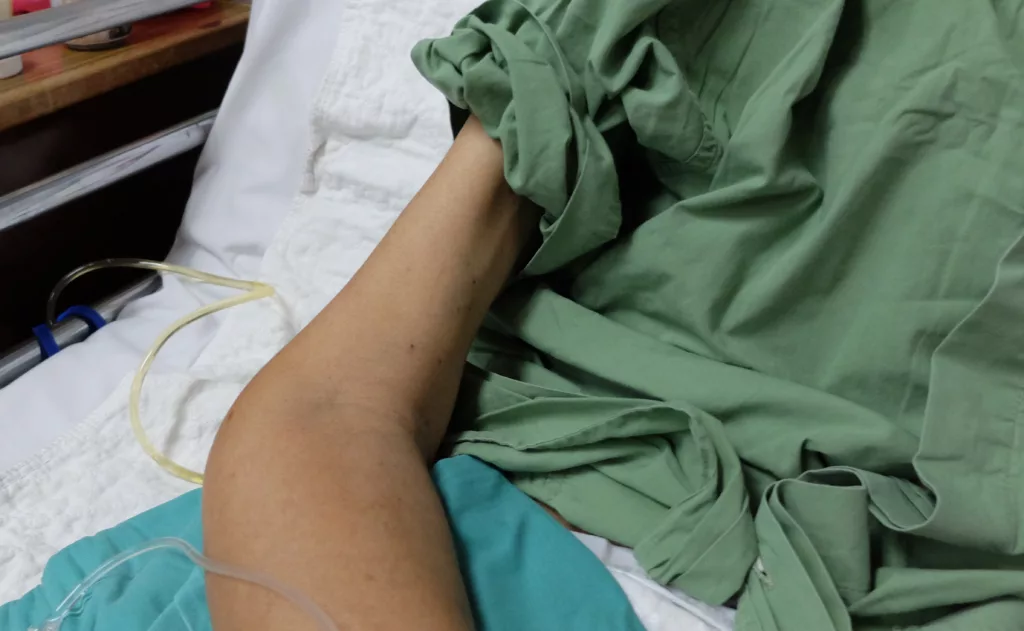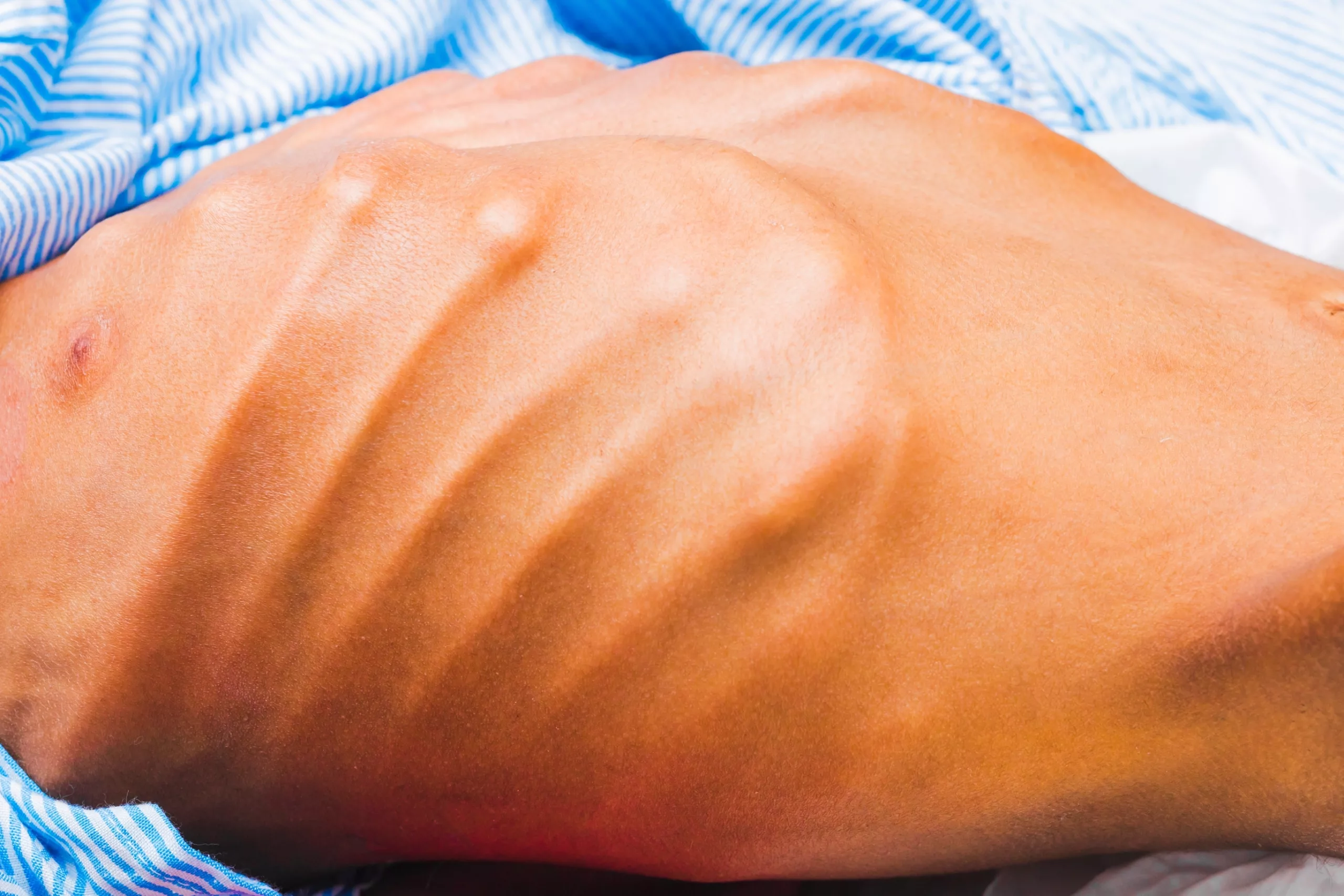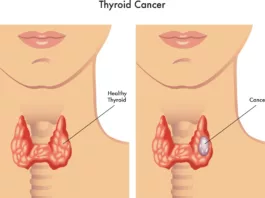Cachexia, also known as wasting syndrome, is a complicated metabolic syndrome involving muscle mass loss along with anorexia, insulin resistance, and increased protein turnover. It also leads to weight loss and increased mortality. Cachexia affects nearly 70% of cancer patients in the late stages of their disease.1Vaughan, V. C., Martin, P., & Lewandowski, P. A. (2013). Cancer cachexia: impact, mechanisms and emerging treatments. Journal of cachexia, sarcopenia, and muscle, 4(2), 95–109. https://doi.org/10.1007/s13539-012-0087-1
What is Cachexia?
Cachexia is a complex metabolic syndrome that typically arises from an underlying chronic illness, such as cancer, heart failure, or chronic obstructive pulmonary disease (COPD). It is primarily characterized by significant loss of muscle mass, which may occur with or without the loss of fat mass. This condition is often associated with a range of metabolic disturbances, including reduced appetite (anorexia), chronic inflammation, insulin resistance, and an increased rate of protein breakdown in the body. These factors contribute to the body’s inability to maintain healthy muscle and fat stores, leading to progressive weight loss and muscle wasting despite adequate nutritional intake.2Reid J, McKeaveney C, Martin P. Communicating with Adolescents and Young Adults about Cancer-Associated Weight Loss. Curr Oncol Rep. 2019 Feb 4;21(2):15. doi: 10.1007/s11912-019-0765-7. PMID: 30715610; PMCID: PMC6400873.3Suzuki T, Palus S, Springer J. Skeletal muscle wasting in chronic heart failure. ESC Heart Fail. 2018 Dec;5(6):1099-1107.

Symptoms of Cachexia
Cachexia is characterized by a range of symptoms that typically include:
Involuntary weight loss
Individuals may experience significant weight loss despite consuming adequate nutrition or high-calorie intake.
Muscle wasting
This is the main symptom of cachexia. However, not all people with cachexia appear malnourished.
Loss of appetite or Anorexia
A common symptom is a reduced desire to eat, often accompanied by an aversion to food.
Reduced Functional Ability
Malaise, fatigue, and low energy levels can occur. Other symptoms can include generalized discomfort, extreme tiredness, or a lack of motivation.
Swelling or Edema
Low protein levels in the blood may cause fluid to move into the tissue, causing swelling.
Causes of Cachexia
Cachexia is primarily caused by a complex interplay of factors that lead to an imbalance between muscle protein synthesis and degradation. One of the main contributors to cachexia is the excess production of cytokines. Cytokines are small proteins released by immune cells that play a critical role in cell signaling, particularly in inflammation and immune responses. In cachexia, pro-inflammatory cytokines like tumor necrosis factor-alpha (TNF-α), interleukin-6 (IL-6), and interleukin-1 (IL-1) are elevated, contributing to increased muscle breakdown and reduced appetite.4Zhang, J. M., & An, J. (2007). Cytokines, inflammation, and pain. International anesthesiology clinics, 45(2), 27–37. https://doi.org/10.1097/AIA.0b013e318034194e
Other factors that contribute to cachexia include hormonal imbalances, such as deficiencies in anabolic hormones like testosterone and insulin-like growth factor-I (IGF-I). Additionally, there is often an excess of catabolic factors like myostatin and glucocorticoids, further promoting muscle wasting. The causes vary depending on a person’s physiology and underlying illness. Still, some factors remain consistent with different diagnoses:
- Increased metabolic rate
- Reduced nutrient intake
- Increased breakdown of muscle
- Prevention of muscle growth
This condition also makes your liver unable to respond well to insulin, leading to insulin resistance. It means your body loses its ability to use blood sugar (glucose) for energy.
Diseases Related to Cachexia
These diseases can also cause cachexia:
- Cancer
- Chronic obstructive pulmonary disease (COPD)
- Cystic fibrosis
- HIV
- Chronic renal failure
- Rheumatoid arthritis
- Crohn’s disease
Stages of Cachexia
Cachexia can be understood better by going through its stages:
Pre-Cachexia:
It is where you lose up to 5% of your body weight due to a known disease. In this stage, you’ll lose your appetite, experience changes in your metabolism, and experience inflammation.
Cachexia:
You lose more than 5% of your body weight in 12 months or less without trying to lose weight or when weight loss is more than 2% with a BMI less than 20kg/m. Other symptoms include decreased appetite, inflammation, fatigue, and loss of muscle strength.
Refractory Cachexia:
In refractory cachexia, weight loss exceeds 15%, and the body mass index (BMI) is below 23 kg/m², or weight loss is over 20% with a BMI under 27 kg/m². It happens when you have cancer and lose weight, muscle, and function. You’ll show a lack of response to cancer treatment. About 70% of people with cancer in its late stages have cachexia, and a third will die from the condition.
Diagnosis of Cachexia
Cachexia is often diagnosed based on a combination of clinical history, physical examination, and laboratory tests. Early in the disease, physical examination findings may be normal. As the condition progresses, signs such as bitemporal muscle wasting, supraclavicular wasting, and general loss of muscle definition may be observed.
Diagnostic Criteria:
Cachexia is diagnosed in the presence of a known chronic disease with at least three of the following factors:5Baker Rogers J, Syed K, Minteer JF. Cachexia. [Updated 2023 Aug 8]. In: StatPearls [Internet]. Treasure Island (FL): StatPearls Publishing; 2024 Jan-. Available from: https://www.ncbi.nlm.nih.gov/books/NBK470208/
-
- Loss of Muscle Mass: Significant reduction in muscle mass.
- Asthenia: Marked weakness or fatigue.
- Loss of Body Fat: Accompanied by inflammation, as indicated by low serum albumin levels (less than 3.2 g/dL) or increased C-reactive protein (CRP) levels.
- Weight Loss: A common diagnostic criterion is unintentional weight loss of more than 5% of body weight over 6-12 months.6Ni, J., & Zhang, L. (2020). Cancer Cachexia: Definition, Staging, and Emerging Treatments. Cancer management and research, 12, 5597–5605. https://doi.org/10.2147/CMAR.S261585
- Body Mass Index (BMI):
o For individuals under 65 years old: A BMI less than 20 kg/m².
o For individuals over 65 years old: A BMI less than 22 kg/m².
BMI is calculated using a person’s height and weight but does not account for muscle mass and fat proportions. Therefore, it is best used in conjunction with body composition measurements.7Ni, J., & Zhang, L. (2020). Cancer Cachexia: Definition, Staging, and Emerging Treatments. Cancer management and research, 12, 5597–5605.https://doi.org/10.2147/CMAR.S261585
Supporting Laboratory Evidence:
-
- Serum Albumin: Levels less than 3.2 g/dL.
- Pre-Albumin: Levels less than 10 mg/dL.
- Transferrin: Levels less than 100 mg/dL.
- C-Reactive Protein: Elevated levels indicate inflammation.
Additional Assessments:
Nutrition
A healthcare professional may request a food journal to track daily food intake. This can help prevent, diagnose, or monitor cachexia. This method has limitations for preventative care and maintenance. It is because it can be present even when enough calories are consumed.
Lean Muscle Mass
Body composition can be used to supplement the information from the BMI. This is measured with tests, such as:
-
- A skin fold test (measuring the thickness of the fat underneath the skin at specific locations)
- Bioelectrical impedance analysis (measuring body composition using electrical currents)
Treatment of Cachexia
There is no specific treatment or way to reverse cachexia. The goal of treatment is to improve symptoms and quality of life. The ASCO guideline on managing cancer cachexia highlights the importance of a multidisciplinary approach, emphasizing early identification and intervention to enhance patient outcomes. The guideline recommends nutritional support, physical activity, and tailored pharmacologic treatments. Key medications include megestrol acetate and corticosteroids for appetite stimulation, though their benefits must be carefully weighed against potential side effects.8Roeland, E. J., Bohlke, K., Baracos, V. E., Bruera, E., del Fabbro, E., Dixon, S., Fallon, M., & Loprinzi, C. L. (2020). Management of cancer cachexia: ASCO guideline. Journal of Clinical Oncology, 38(21). https://doi.org/10.1200/JCO.20.00611
Medical Management
The following medications can help to deal with cachexia:
Appetite Stimulants:
Megestrol Acetate
This progestational agent can be frequently used to treat patients with metastatic breast cancer. Megestrol acetate, administered at doses ranging from 320 mg to 800 mg daily, is the most researched and effective treatment for anorexia. Studies indicate that approximately 30% of patients experience a boost in appetite and an increase in body mass index, mainly due to fat gain and some improvement in quality of life. However, there is no evidence that it extends survival.9Ruiz Garcia V, López-Briz E, Carbonell Sanchis R, Gonzalvez Perales JL, Bort-Marti S. Megestrol acetate for treatment of anorexia-cachexia syndrome. Cochrane Database Syst Rev. 2013 Mar 28;2013(3):CD004310. doi: 10.1002/14651858.CD004310.pub3. PMID: 23543530; PMCID: PMC6418472.
Dronabinol (Marinol)
A cannabinoid that helps to improve appetite and mood and manage nausea. It has shown benefits in both healthy individuals and cancer patients.
Anti-inflammatory & Anabolic Agents:
Corticosteroids
Several uncontrolled studies suggest that corticosteroids can reduce symptoms such as anorexia, asthenia, and pain in cancer patients. Corticosteroids can effectively boost appetite, but due to their potential side effects, they are recommended for short-term use, typically less than four weeks. Besides increasing appetite, steroids may also help reduce inflammation.
Indomethacin & Ibuprofen
These agents inhibit prostaglandin synthesis. In clinical trials, indomethacin reduces fever and granulocytosis and improves the well-being of cancer patients. However, in cachectic cancer patients, ibuprofen decreases C-reactive protein to increase body weight and improve survival.
Medroxyprogesterone Acetate
Medroxyprogesterone acetate is a more widely used synthetic progestogen. It reduces the production of cytokines and serotonin that are involved in cachexia in cancer patients.
Treatment Specific to Cardiac Cachexia:
Cardiac cachexia is a severe weight loss condition seen in chronic heart failure patients, marked by muscle and fat loss. It is linked to inflammation and poor outcomes, with treatment focusing on heart failure management and nutritional support.
Beta-Blockers (Carvedilol)
In patients with cardiac cachexia, carvedilol has demonstrated significant improvements, potentially by mitigating the hypermetabolic state characteristic of cachexia.
ACE Inhibitors and Angiotensin II Receptor Blockers
Preclinical studies suggest these medications may protect muscles by improving mitochondrial function, enhancing insulin sensitivity, and reducing local inflammation.
Nutritional & Supportive Therapies
Dietary Interventions:
Nutritional supplements, particularly high-calorie and high-protein options, play a crucial role in maintaining nutritional status in patients with cachexia. These supplements can help counteract weight loss and support overall health. In addition to these, a registered dietitian may recommend specific dietary modifications tailored to boost energy levels and preserve muscle mass. Omega-3 fatty acids are another important consideration; they have anti-inflammatory properties and may further aid in reducing muscle wasting, offering additional support in managing cachexia.
Exercise & Physical Therapy:
Adapted exercise programs are essential for managing cachexia, as tailored regimens can help maintain muscle mass, enhance physical function, and improve overall well-being. By focusing on exercises suited to an individual’s capabilities and needs, these programs can counteract some muscle loss and functional decline associated with the condition. Additionally, physical therapy can play a significant role in alleviating symptoms such as fatigue and muscle weakness.10Hardee, J. P., Counts, B. R., & Carson, J. A. (2017). Understanding the Role of Exercise in Cancer Cachexia Therapy. American journal of lifestyle medicine, 13(1), 46–60. https://doi.org/10.1177/1559827617725283
There is ongoing research into cachexia that suggests experimental therapies such as ghrelin agonists for appetite and muscle growth, selective androgen receptor modulators (SARMs) for muscle preservation, and thalidomide for its potential anti-inflammatory effects.11Naito T. (2019). Emerging Treatment Options For Cancer-Associated Cachexia: A Literature Review. Therapeutics and clinical risk management, 15, 1253–1266. https://doi.org/10.2147/TCRM.S196802
Cachexia Vs. Sarcopenia
Sarcopenia refers to the progressive loss of muscle mass and function that occurs with aging, characterized by muscle fiber atrophy, particularly of type II (fast-twitch) fibers, a decrease in the number of motor units, and fat infiltration within the muscle. It is closely related to aging and is influenced by factors such as physical inactivity and poor nutrition.
In contrast, cachexia is a complex metabolic syndrome associated with an underlying illness, marked by significant weight loss and loss of fat-free mass, often accompanied by systemic inflammation and metabolic disturbances. Cachexia is typically seen in the context of chronic diseases such as cancer, and its prominent clinical feature is weight loss, not solely attributable to malnutrition.
Both conditions share the common feature of reduced muscle mass, but they differ in their underlying causes and associated features. Sarcopenia is primarily linked to aging, while cachexia is associated with chronic illness and involves additional systemic effects beyond muscle loss.12Peixoto da Silva, S., Santos, J. M. O., Costa E Silva, M. P., Gil da Costa, R. M., & Medeiros, R. (2020). Cancer cachexia and its pathophysiology: links with sarcopenia, anorexia, and asthenia. Journal of cachexia, sarcopenia, and muscle, 11(3), 619–635. https://doi.org/10.1002/jcsm.12528.
What can you do to prevent Cachexia?
Preventing cachexia involves addressing risk factors and monitoring at-risk populations. Elderly individuals who are chronically bedbound or nonambulatory, as well as those with a history of significant recent weight loss and malnutrition (including alcoholics), should be closely monitored. Additionally, individuals with chronic medical conditions associated with muscle loss, such as diabetes and chronic heart, lung, kidney, or liver disorders, should be regularly assessed for signs of muscle wasting.
Conclusion
In conclusion, Cachexia is a serious condition often seen in people with severe illnesses, leading to weight loss, muscle wasting, and a drop in overall well-being. While it can be tough to manage, recognizing it early and using a well-rounded approach can make a big difference. This means focusing on good nutrition, using the right medications, and incorporating physical therapy. New research is also exploring other treatments that might help in the future. By tackling cachexia early and with the right strategies, we can improve patient’s quality of life and possibly their outlook.
Refrences
- 1Vaughan, V. C., Martin, P., & Lewandowski, P. A. (2013). Cancer cachexia: impact, mechanisms and emerging treatments. Journal of cachexia, sarcopenia, and muscle, 4(2), 95–109. https://doi.org/10.1007/s13539-012-0087-1
- 2Reid J, McKeaveney C, Martin P. Communicating with Adolescents and Young Adults about Cancer-Associated Weight Loss. Curr Oncol Rep. 2019 Feb 4;21(2):15. doi: 10.1007/s11912-019-0765-7. PMID: 30715610; PMCID: PMC6400873.
- 3Suzuki T, Palus S, Springer J. Skeletal muscle wasting in chronic heart failure. ESC Heart Fail. 2018 Dec;5(6):1099-1107.
- 4Zhang, J. M., & An, J. (2007). Cytokines, inflammation, and pain. International anesthesiology clinics, 45(2), 27–37. https://doi.org/10.1097/AIA.0b013e318034194e
- 5Baker Rogers J, Syed K, Minteer JF. Cachexia. [Updated 2023 Aug 8]. In: StatPearls [Internet]. Treasure Island (FL): StatPearls Publishing; 2024 Jan-. Available from: https://www.ncbi.nlm.nih.gov/books/NBK470208/
- 6Ni, J., & Zhang, L. (2020). Cancer Cachexia: Definition, Staging, and Emerging Treatments. Cancer management and research, 12, 5597–5605. https://doi.org/10.2147/CMAR.S261585
- 7Ni, J., & Zhang, L. (2020). Cancer Cachexia: Definition, Staging, and Emerging Treatments. Cancer management and research, 12, 5597–5605.https://doi.org/10.2147/CMAR.S261585
- 8Roeland, E. J., Bohlke, K., Baracos, V. E., Bruera, E., del Fabbro, E., Dixon, S., Fallon, M., & Loprinzi, C. L. (2020). Management of cancer cachexia: ASCO guideline. Journal of Clinical Oncology, 38(21). https://doi.org/10.1200/JCO.20.00611
- 9Ruiz Garcia V, López-Briz E, Carbonell Sanchis R, Gonzalvez Perales JL, Bort-Marti S. Megestrol acetate for treatment of anorexia-cachexia syndrome. Cochrane Database Syst Rev. 2013 Mar 28;2013(3):CD004310. doi: 10.1002/14651858.CD004310.pub3. PMID: 23543530; PMCID: PMC6418472.
- 10Hardee, J. P., Counts, B. R., & Carson, J. A. (2017). Understanding the Role of Exercise in Cancer Cachexia Therapy. American journal of lifestyle medicine, 13(1), 46–60. https://doi.org/10.1177/1559827617725283
- 11Naito T. (2019). Emerging Treatment Options For Cancer-Associated Cachexia: A Literature Review. Therapeutics and clinical risk management, 15, 1253–1266. https://doi.org/10.2147/TCRM.S196802
- 12Peixoto da Silva, S., Santos, J. M. O., Costa E Silva, M. P., Gil da Costa, R. M., & Medeiros, R. (2020). Cancer cachexia and its pathophysiology: links with sarcopenia, anorexia, and asthenia. Journal of cachexia, sarcopenia, and muscle, 11(3), 619–635. https://doi.org/10.1002/jcsm.12528





